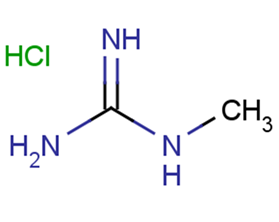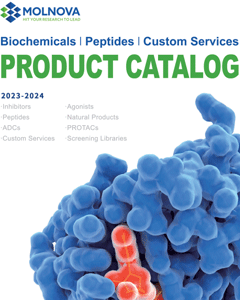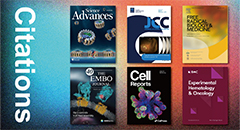
1-Methylguanidine hydrochloride
CAS No. 21770-81-0
1-Methylguanidine hydrochloride ( —— )
产品货号. M19576 CAS No. 21770-81-0
1-Methylguanidine hydrochloride 是一种内源性代谢产物。
纯度: >98% (HPLC)
 COA
COA
 Datasheet
Datasheet
 HNMR
HNMR
 HPLC
HPLC
 MSDS
MSDS
 Handing Instructions
Handing Instructions
| 规格 | 价格/人民币 | 库存 | 数量 |
| 500MG | ¥332 | 有现货 |


|
| 1G | 获取报价 | 有现货 |


|
生物学信息
-
产品名称1-Methylguanidine hydrochloride
-
注意事项本公司产品仅用于科研实验,不得用于人体或动物的临床与诊断
-
产品简述1-Methylguanidine hydrochloride 是一种内源性代谢产物。
-
产品描述Methylguanidine (MG) is a guanidine compound deriving from protein catabolism. It is also a product of putrefaction. Methylguanidine is a suspected uraemic toxin that accumulates in renal failure however it also exhibits anti-inflammatory effects. Methylguanidine is synthesized from creatinine concomitant with the synthesis of hydrogen peroxide from endogenous substrates in peroxisomes. Recent evidence suggests that methylguanidine significantly inhibits iNOS activity and TNF- release. This means that methylguandine can attenuate the degree of inflammation and tissue damage associated with endotoxic shock.
-
体外实验——
-
体内实验——
-
同义词——
-
通路Others
-
靶点Other Targets
-
受体Others
-
研究领域——
-
适应症——
化学信息
-
CAS Number21770-81-0
-
分子量109.56
-
分子式C2H8ClN3
-
纯度>98% (HPLC)
-
溶解度DMSO:200 mM
-
SMILESCl.CNC(N)=N
-
化学全称——
运输与储存
-
储存条件(-20℃)
-
运输条件With Ice Pack
-
稳定性≥ 2 years
参考文献
1.Silwood CJ Lynch E Claxson AW Grootveld MC: 1H and (13)C NMR spectroscopic analysis of human saliva. J Dent Res. 2002 Jun;81(6):422-7.
产品手册




关联产品
-
Collagenase Type I
Collagenase, Type V 是一种来源于微生物的基质金属蛋白酶 (MMP) 和锌肽酶。Collagenase, Type V 分解胶原蛋白1、3、5、7、8、10、纤连蛋白、明胶、聚集蛋白聚糖。
-
Dimethoate
乐果是一种内吸性和接触性杀虫剂,用于控制牛蛴螬和农场动物的某些其他害虫。
-
(Lys(Biotin)29)-Cort...
(Lys(Biotin)29)-Cortistatin-29 (rat)



 021-51111890
021-51111890 购物车()
购物车()
 sales@molnova.cn
sales@molnova.cn







